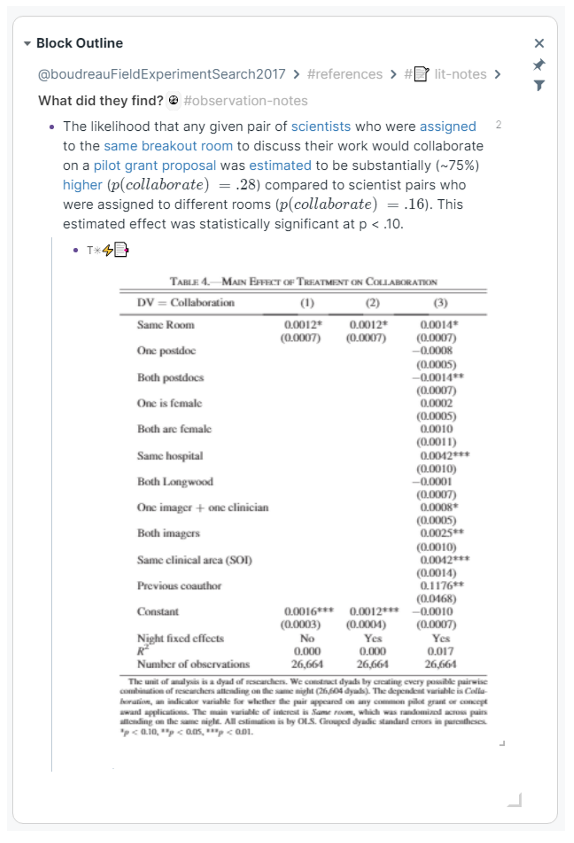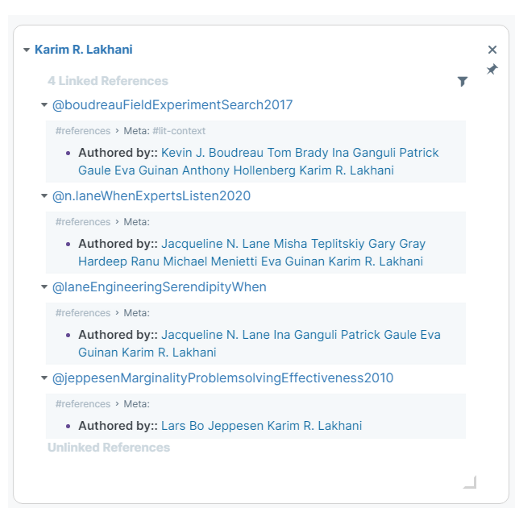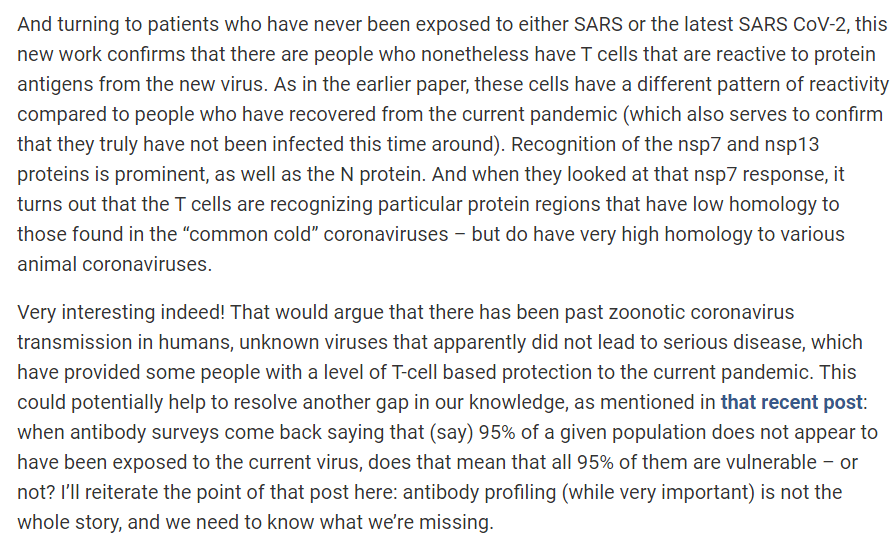
Love this metaphor!
A quick 🧵 to illustrate how much compression and expressivity we can pack into a @RoamResearch block to power synthesis.
cc #roamcult
A quick 🧵 to illustrate how much compression and expressivity we can pack into a @RoamResearch block to power synthesis.
cc #roamcult
https://twitter.com/RobertHaisfield/status/1364785209850228737
Let's consider the following block (what I call an "observation note" from my conceptual/process model for synthesis: oasislab.pubpub.org/pub/54t0y9mk/r…) 

The block has context from "below" via 1) a context snippet snapshot of the Table of results, indented under the note, and also hyperlinked into it, 2) methods details that live as blocks (which are themselves contextualized by context snippets via indentation and hyperlinking). 

This rich contextualizing information is available on-hover, as well as by clicking to unindent and reveal an indented block
Clicking through to a hyperlinked methods observation note also opens up a similar set of rich access to contextual information, through hyperlinking and indentation 

Importantly, the block/graph data structure also means that other contextual details from the same paper are accessible (and in principle queryable and computable for context queries for synthesis) through their common parent (the paper page).
First, the screenshot shows how every block in the indentation "path" (every item between `>` symbols) is formally connected to the `observation note` in the underlying graph. 

But every other child of the shared parent page is also formally connected to the focal `observation note`, so details like the procedure, experiment design, or metadata (e.g.,,authors, year) are closely accessible and also in principle queryable/computable. 

Since every element is linkable, we can also explore details about the authors (via linked references of the author page) to help contextualize the focal `observation note`: e.g., "where does this author tend to publish? What disciplinary angles might they be coming from?" 

The focal `observation note` also has rich "discourse context" from "above" and "beside", through referencing in other pages or blocks.
For instance, clicking on the `2` button on the right reveals two references to the focal `observation note`: 1) discussion of this result in a question note, and 2) reference in a "sibling" `observation note` that qualifies the focal result in an important way. 

Seeing the focal `observation note` in its larger referenced/discourse context helps reveal also how having direct access to contextualizing information through hyperlinking can facilitate synthesis across `observation notes`. 

For example, might there be variations in effects by institution/prestige, such as resources that needs to be taken into account for face-to-face conversations to bear fruit? These details are just a hover or click away in context of the larger synthesis. 

I've never been able to create such information objects like this for synthesis.
I'm super excited to see the value that will continue to accrue from these notes. All powered by rich affordances for compression, which make these notes so much more alive!
I'm super excited to see the value that will continue to accrue from these notes. All powered by rich affordances for compression, which make these notes so much more alive!
I've found it hard to imagine how these rich layers of compression could be implemented in page-centric data structures (vs. a combo block/page-centric db).
I'm curious if others who use more page-centric networked notebooks like Obsidian are able to do similar things?
I'm curious if others who use more page-centric networked notebooks like Obsidian are able to do similar things?
• • •
Missing some Tweet in this thread? You can try to
force a refresh







